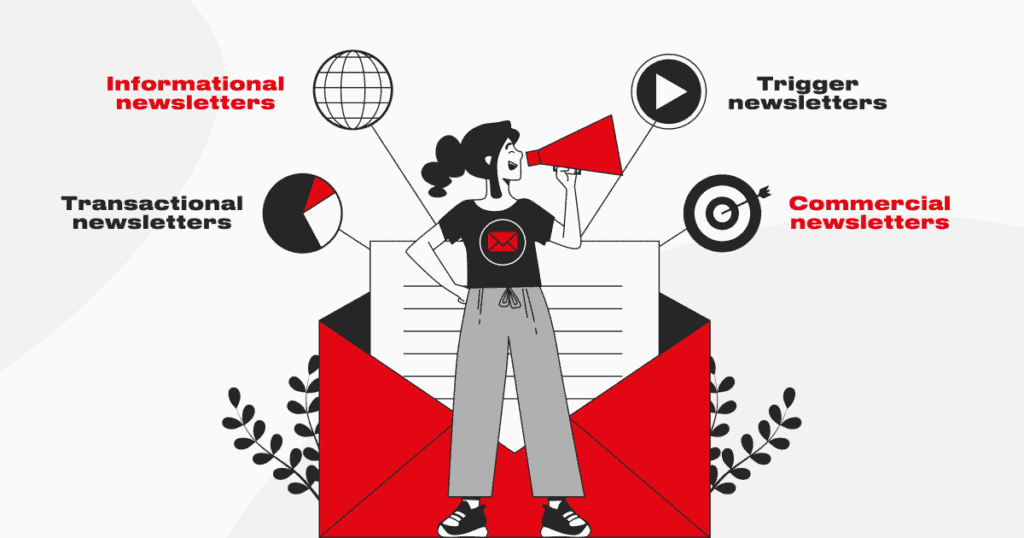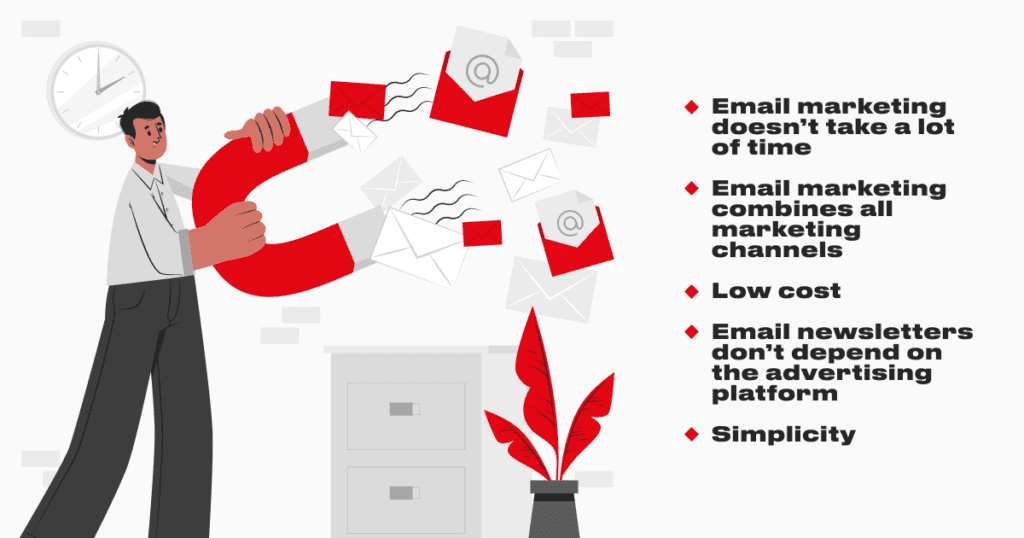Email newsletter – a modern way to share news

Nowadays, fewer and fewer people prefer to read the information on paper, such as in newspapers and magazines. The digital world continues to pull us into its networks and use phones or computers to read information. That is why, over time, a new kind of newsletter has appeared – an email newsletter. Companies use email newsletters to notify customers about promotions, discounts, new products, and company news. In this blog post, you will learn more about email newsletters and their use in marketing strategy. In this blog post, we will tell more about email newsletters, what types of them we have, why we need email newsletters, and how they work.
To begin with, an email newsletter is an automated sending of emails to a certain group of recipients. This type of communication is an important part of any marketing campaign, as it builds the loyalty of potential customers, grows awareness about the company and its products, and increases sales.
Email mailing is a great marketing tool.
Proper creation of an electronic mailing list helps to solve several tasks at once:
- Inform subscribers about the appearance of new products, services, training programs, publications on the site.
- Unobtrusively advertise a product or service, tell about the current promotions.
- To help the user understand the product, for example, to tell about the capabilities of the service.
- Provide important information about the order and its delivery time.
- Increase the number of loyal customers.
- Establish good relations with a customer to get feedback on the purchase.
The main task of email newsletters is to turn site visitors who have left their contact details into customers and motivate existing customers to repeat purchases. Email marketing is more suitable for increasing the level of repeating sales. As a rule, the contact database includes those who have registered on the site or have already bought something. In any case, you still have his contact, and, as was mentioned in our list before, with the help of email newsletters you can remind a person about your product or service, tell about promotions and discounts being.
Moreover, email newsletters are very cheap compared to other channels, and email marketing automation allows you to save even more. When you wrote the strategy and configured the mailing of newsletters according to the rules, you can receive new sales on autopilot.
Types of email newsletters.

There are several types of email newsletters, and all of them are aimed at achieving specific goals.
- Informational newsletters are the easiest way to increase your credibility, form public opinion, and become a friend to a potential or real client. The main purpose of such emails is to tell the subscriber an interesting story, share experiences, and also help to solve his problem. Usually, such newsletters are sent regularly: once a week, once every two weeks, or once a month. It can be a digest with news, a selection of tips, or even an article.
- Commercial newsletters advertise a product/service and guide the customer through the sales funnel. It often includes a selection of goods or services, a description of the product, and tells about discounts, promotions, sales. The goal of such emails is to encourage the client to do some action: go to the catalog, call, order, etc.
- Transactional newsletters offer to continue registration, extend the service, try a new product, provide information about the order and delivery. A transactional email is an automatic email that is sent to the user after doing actions on the site. These messages are aimed at facilitating the client’s communication with the Internet resource and increasing engagement.
- Trigger newsletters are the fuel of the user’s interest. Trigger newsletters additionally motivate the visitor to add, return the product or remind it. Such a newsletter consists of several consecutive letters, customized depending on the actions and interests of the client. The most popular example of a trigger mailing is a reminder of an abandoned basket. return to the site according to a given relationship scenario.
Reasons to use newsletters.

You may ask what are the advantages of email marketing compared to other tools?
It’s fast, simple, and cheap!
Email marketing doesn’t take a lot of time. A correctly written newsletter brings results immediately after sending. The only question is what you want to achieve in the end – to increase traffic to the site, get sales growth, or a high percentage of opening emails. On average, after the appearance of the mailing list, sales usually increase by 10%.
Email marketing combines all marketing channels. A potential buyer uses email to register on social networks and various services like Google. Email is a centralized channel, when we have an email address, we can use it on any platform or program, and messengers are linked to this address as well.
Low cost. With a certain volume of the email list database, email marketing may cost nothing at all, or the price will be minimal. You can also save on a copywriter and a designer, since many mailing services have built-in templates that you can use for free, or take a template as an idea to create your own template.
Email newsletters don’t depend on the advertising platform. Every year, social networks change content algorithms and introduce new features that affect user reach and engagement. At the same time, the developers don’t disclose the detailed mechanism of the algorithms. In email marketing, subscribers decide when and which emails to read. Therefore, the effect of the letter is stretched over time: people return to finish reading the letters after a few days.
Simplicity. The implementation of email marketing in your project is quite easy. There are some email marketing rules to follow:
- Sending emails only to those users who have subscribed to the newsletter, meaning that they are interested in your field in one way or another.
- Mailing should be carried out regularly – like a new issue of your favorite newspaper or magazine.
- Polite treatment and competent text.
- Specify the contacts and the reason why the client receives your newsletter.
Conclusions.
Email marketing is a proven channel for promotion and sales. If you have a subscriber base, but there is no email newsletter, you need to think about launching it. Email newsletters pay off well and it’s easy to launch a newsletter even with a low budget, and personalized emails bring more sales and are useful to a specific user. Moreover, the effectiveness of newsletters doesn’t depend on other marketing channels. Thanks to newsletters, you can promote the product through other marketing channels: social networks, contextual advertising, a website, and email newsletters automate the sales funnel and work all day long.




